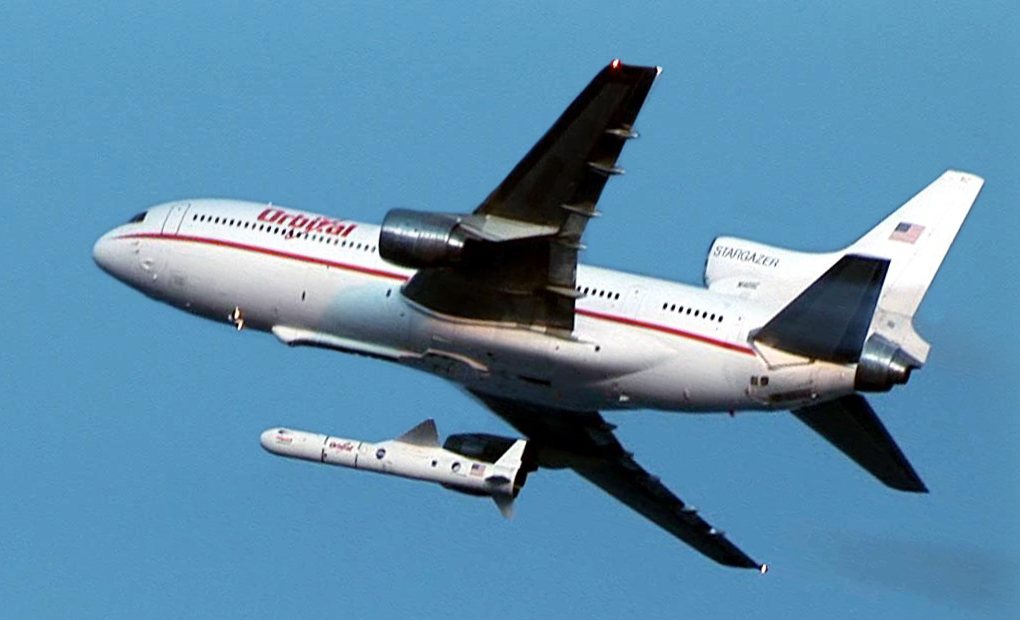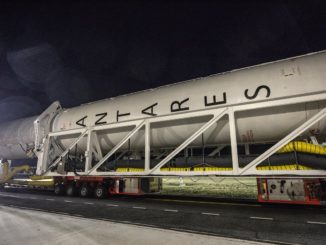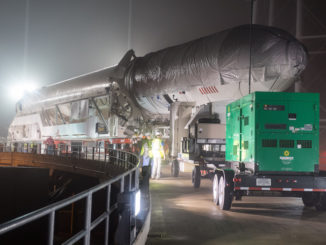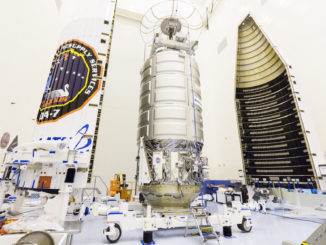
The aircraft that air-launches the Pegasus rocket has been repainted with new livery to mark the recent corporate merge that formed Orbital ATK.
The L-1011 jet, named Stargazer, carries the light-class Pegasus launchers to an altitude of 39,000 feet and releases the booster to fire into space.
Pegasus has flown 42 times and the 32 using the XL version. The rocket weighs 51,000 pounds, stretches 55 feet long and is comprised of three solid-fueled stages for boosting small satellites into orbit. Launches have occurred from California, Virginia, Florida, the Canary Islands and the Kwajalein Atoll in the Marshall Islands.
Stargazer was delivered to Air Canada in March 1974. It was purchased by Orbital ATK in 1992 and modified as the Pegasus launch platform.
With the push of a button in the Stargazer’s cockpit by the co-pilot, the rocket is cast free to fall for five seconds, dropping 300 feet below the aircraft while traveling at Mach 0.82. During the plunge, the onboard flight computer will sense the rocket’s separation from the carrier jet and issues a command to release the safety inhibits in preparation for ignition.
The first stage solid-fueled motor of Pegasus is lit at T+plus 5 seconds to begin the powered journey to orbit. The rocket’s heritage includes deploying over 70 satellites since 1990 for NASA, commercial customers and the U.S. military.
Pegasus celebrated the 25th anniversary of its maiden launch on April 5.
Two more Pegasus flights are on the NASA manifest for 2016 and 2017. The first will launch eight Cyclone Global Navigation Satellite System, or CYGNSS, spacecraft into orbit from Florida and the second will carry the Ionospheric Connection Explorer, or ICON, to space from the Marshall Islands.
See our Pegasus archive.




